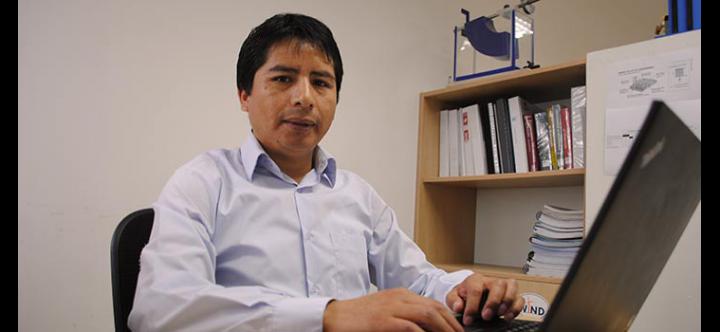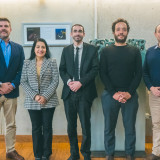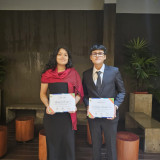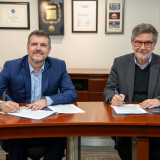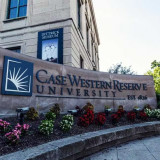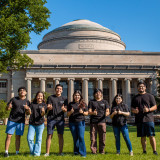Learn
About Us
The university that empowers ingenuity, innovation, and entrepreneurship.
Our Academic
Offer
With our active learning methodology, our students experience engineering from day one.
Ingenuity,
dedication, and
the pursuit
of excellence
Our students' DNA: achieving highest academic achievement and personal development.
International
alliances
We've built strong relationships with the best educational institutions in the world.
Research
Experience
The right path to finding better solutions.
Sustainability UTEC
Sustainability documents
Contact:
Giancarlo Marcone
HACS DIRECTOR
gmarcone@utec.edu.pe
Learn
About Us
The university that empowers ingenuity, innovation, and entrepreneurship.
Our Academic
Offer
With our active learning methodology, our students experience engineering from day one.
Ingenuity,
dedication, and
the pursuit
of excellence
Our students' DNA: achieving highest academic achievement and personal development.
International
alliances
We've built strong relationships with the best educational institutions in the world.
Research
Experience
The right path to finding better solutions.
Sustainability UTEC
Sustainability documents
Contact:
Giancarlo Marcone
HACS DIRECTOR
gmarcone@utec.edu.pe
Seeking to give momentum to a cooperative network that carries out projects and research which enable them to provide solutions to real world problems, a group of students from Universidad de Ingeniería y Tecnología (UTEC) and the Massachusetts Institute of Technology (MIT) visited the Rayampampa community in Tarma, Junín, where they installed a thermal insulation system using Peruvian feather grass (“ichu”) fibers, in a number of community houses and in one of the classrooms at the Rayampampa CRFA Secondary School.What do UTEC and MIT students want to achieve with this housing development project in the Andean mountain regions, where they installed the thermal insulation system using Peruvian feather grass?This project forms part of a series of projects that UTEC and MIT began developing some time ago because at UTEC we strongly encourage that the learning process in engineering not be limited to academic presentations combined with laboratory experiments and classroom projects. It is very important to us that the students develop and recommend solutions that are based on actual real world needs. This is why this project was implemented in the Rayampampa Rural Community (Tarma). The solution the students proposed sought to improve the quality of life through a process involving co-learning or collaborative open learning by both community residents and the students in charge of the project. What results were obtained in this thermal insulation project developed by the students?Following the field visits and interviews with members of the population, students discovered that harsh cold waves constituted the main problem faced by inhabitants of the Andean highlands because the severe cold combined with the primitive construction of the homes leads to rapid heat loss. Based the above, the initial solution had to begin with the thermal insulation of the rooms where they could apply the use of natural fibers, materials to which the community had ready access and which required minimal investment. It was determined from the experiments carried out that “Ichu” or Peruvian feather grass fibers proved to be the best material to use given its characteristics and properties of thermal conductivity and density. Next, the students implemented their solution in one of the classrooms at the Rayampampa Secondary School. All of these results will be included in a scientific article. Why could this thermal insulation project prove to be a solution for the Andean Highland regions?Because it is a material found in abundance throughout the Andean Highland region and it is readily available at minimal cost. Given its low density, it may be installed in the roofs and walls without any concern for effects on structural load. What are the species of our flora that have applications in thermal insulation? We are fortunate to be a country that has an abundance of available materials from the coast to the tropical forest, which can be used as thermal insulation. Examples of this include the fibers from coconut, wheat and bamboo, etc. What is left to be completed is a study of thermal insulation potential of each of these fibers. At UTEC we have already commenced this study, and our findings indicate that Peruvian feather grass can be used effectively as thermal insulation system. What experiences do your students obtain from their participation in these practice-based projects and in their exchange of ideas with students from other countries? During these projects, UTEC students attend classes and lectures associated with the development of their projects, and also write scientific articles, conduct data analysis, experiment with materials and their applications, and they defend their proposals. In addition, they begin to work with students from other countries such as MIT, working jointly to achieve solutions to real world problems, which enables them to contribute to the development of their country through engineering. What type of learning do you want to develop in UTEC students from their undertaking of this type of projects?At UTEC we seek to instill a true motivation in students with respect to their career development, since they are the ones who will be finding solutions that will have an enormous social impact in the fields and places in which they are applied. This way, they not only receive an education in numbers and science, but they also develop their ingenuity to create solutions to real world problems, without the requirement to have previously completed their university studies. Some advice for students who complete their studies and want to study Mechanical Engineering at UTEC Being an engineer is about learning everything that we can from different fields; a knowledge of physics and mathematics does not suffice. Creativity and ingenuity are needed to develop and recommend real world solutions. This is what we seek in students at UTEC.
EN UTEC VENIMOS DESARROLLANDO LA TECNOLOGÍA
Y LA INGENIERÍA QUE NECESITA EL MUNDO DEL MAÑANA
Carreras en ingeniería y tecnología que van de la mano con la investigación y la creación de soluciones tecnológicas de vanguardia, comprometidas con las necesidades sociales y la sostenibilidad.
Decide convertirte en el profesional que el mundo necesita. Estudia en UTEC y lleva tu ingenio hacia el futuro.
Noticias recientes
-
- STUDY ABROAD
- Studying in Peru
- Living in Peru
- FAQ
- Application Form
- Contact us
-
- EXECUTIVE EDUCATION
- Executive Education
- Short Courses
- Inhouse Courses
- Calendar
